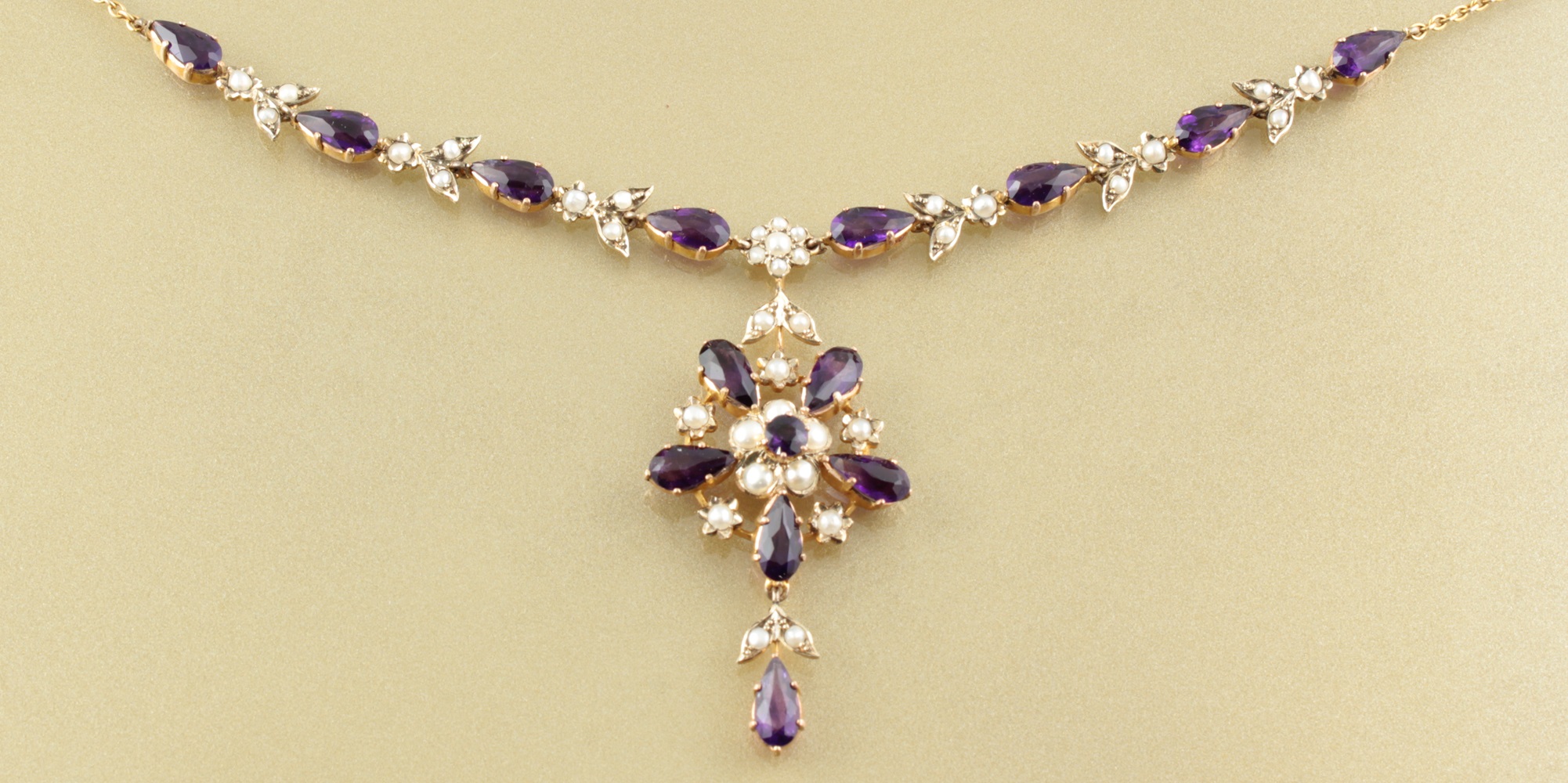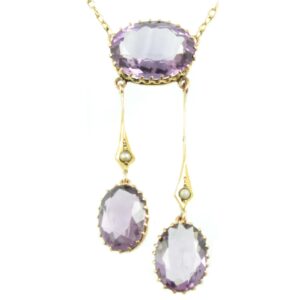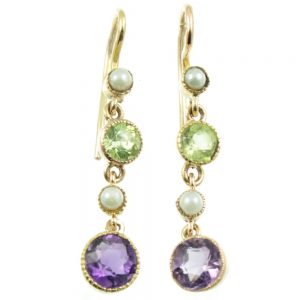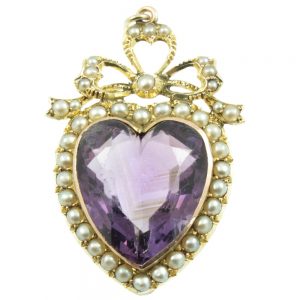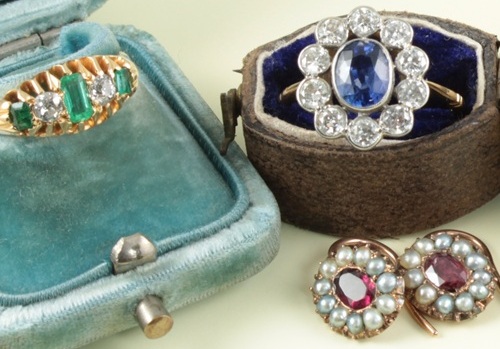Amethyst
Amethyst is a member of the Quartz family and it ranges in colour from pale lilac to deep purple. It gets its colour from Iron and other trace elements such as manganese. The paler shades of the stone are often called “Rose de France”. Siberian Amethyst is a deeper shade of purple and is generally considered the most prized. This gemstone can be heat treated between 470 – 750 degrees Celsius. Which will change its colour, giving shades of light yellow, red to brown, green or it can be made transparent. Some Amethysts are sensitive to light and may fade if exposed to direct sunlight for prolonged periods. This gemstone is formed of hexagonal prisms ( Trigonal ) and is a 7 on the Moh`s hardness scale. Which gives this gemstone excellent durability.
History
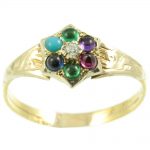 Amethyst and its use in jewellery has a very long history. With evidence of mining in Wadi El-hudi, Egypt as far back as 4,000 years ago. At the time Wadi El-hudi was the largest Amethyst mine in the world. The Egyptians craved this gemstone into figures and also made it into beads, for use in jewellery and for religious rituals.
Amethyst and its use in jewellery has a very long history. With evidence of mining in Wadi El-hudi, Egypt as far back as 4,000 years ago. At the time Wadi El-hudi was the largest Amethyst mine in the world. The Egyptians craved this gemstone into figures and also made it into beads, for use in jewellery and for religious rituals.
Up to the early 19th century, the main source of the gemstone was mined in Siberia. Siberian Amethyst has a deep purple hue and is still considered the best. During this time it was so valuable that it was included in the cardinal gemstones. Being equal in value to Emerald, Ruby, Sapphire, and Diamond. However, in the early 1800`s huge deposits were found in Brazil and so it fell in value. Amethyst is no longer included in the cardinal gemstone instead, it is classified as a semi-precious gemstone. Today it is found all over the world, but Brazil is still the largest producer accounting for 66% of world production.
Folklore
The name Amethyst comes from the Greek for “Not Intoxicated”. Ancient Greeks and Romans believed that this gemstone protected the wearer from drunkenness. They not only wore the gemstone, they also drank from goblets made of the stone, in the belief that it would keep them clear-headed and quick-witted.
In medieval Europe Catholic bishops began to wear the gemstone in rings, which were often times craved with intaglios. These rings were to symbolize that they were wed to the Church. Which led it to being called the bishop’s gemstone. Amethyst is the official gemstone of the Catholic Church and is believed to bestow “Chastity, Piety, and Trust” upon the wearer. Valentine of Turni, a Catholic clergyman wore an Amethyst ring with a intaglio of Cupid on it. After he was martyred for preaching the gospel. He was canonized as Saint Valentine and became the patron Saint of lovers.
European medieval soldiers also wore the gemstone for protection in battle and in the belief of the stone’s ability to heal people.
Amethyst Gemological Data
Colour: Purple, violet, pale red-violet.
Colour of Streak: White.
Moh`s hardness: 7
Density: 2.65
Cleavage: None.
Fracture: Conchoidal, very brittle.
Crystal system: Trigonal, hexagonal prisms.
Transparency: Transparent.
Chemical composition: SiO2 silicon dioxide.
Refractive index: 1.544 – 1.553
Double refraction: +0.009
Pleochroism: Weak; reddish-violet, gray-violet.
Dispersion: 0.013
Fluorescence: Weak; blueish.
For Researchers and Journalists
Recommended Citation (MLA) Format:
Hoyne, John. “Amethyst Gemstone.” Carus Jewellery, n.d., https://carusjewellery.com/amethyst/.
You can also get in touch with Carusjewellery.com on Facebook , were you may leave any comments or questions you may have about this article.

